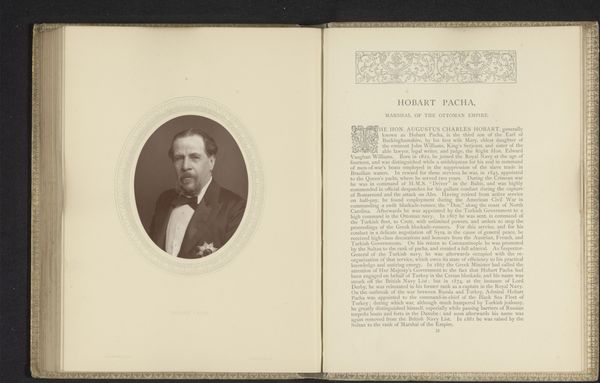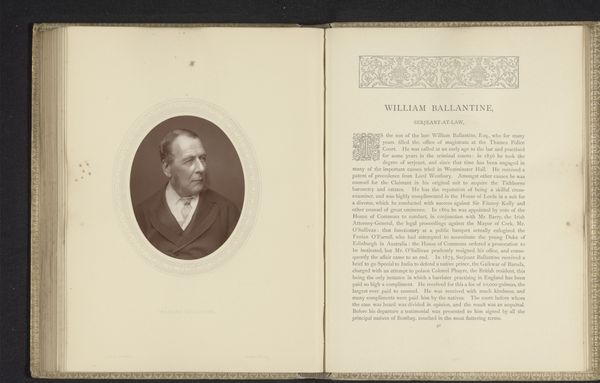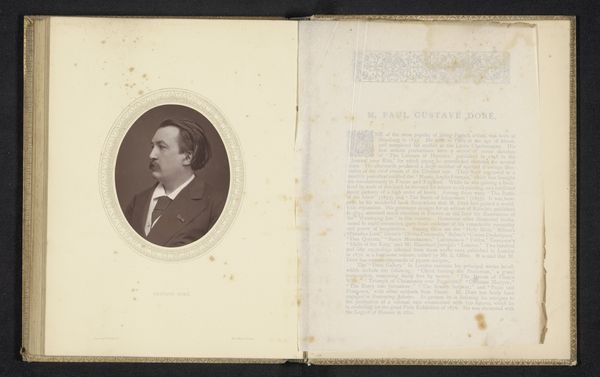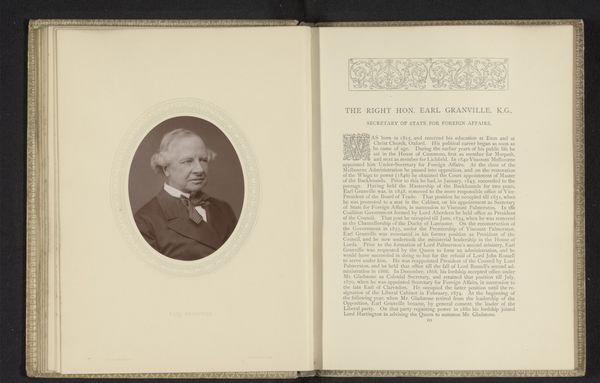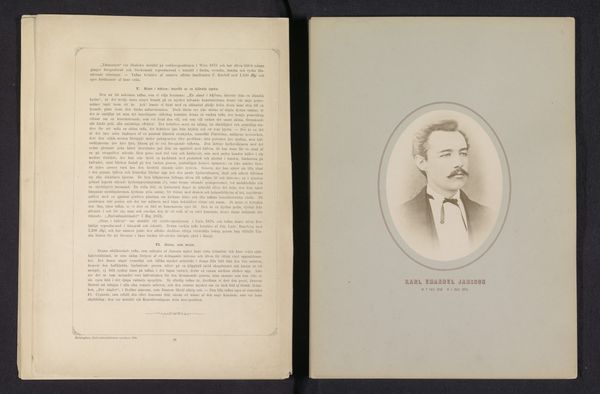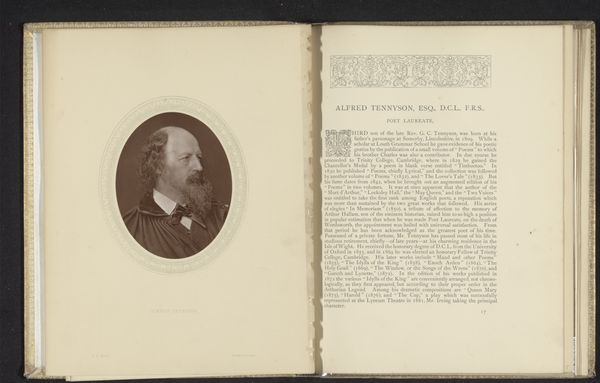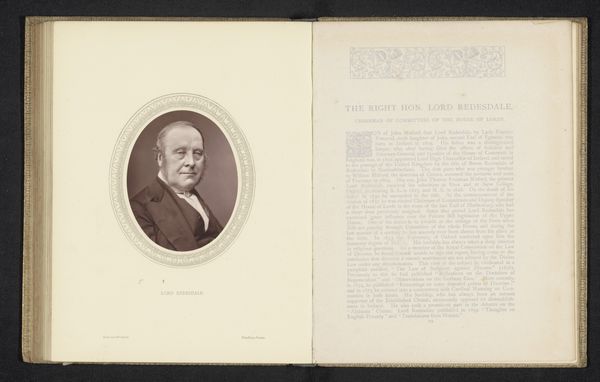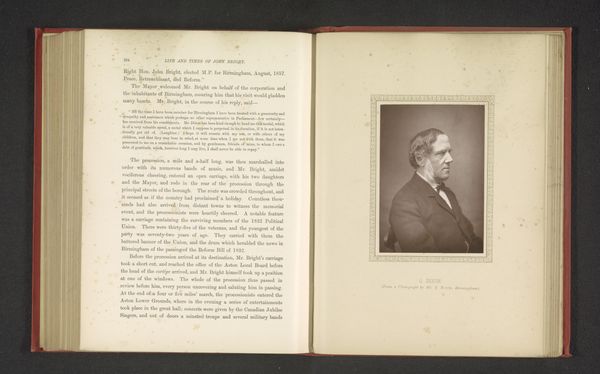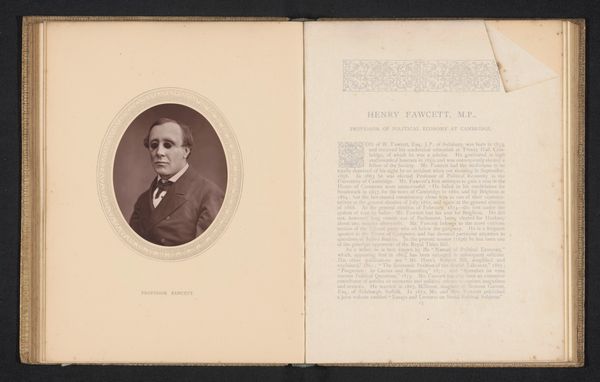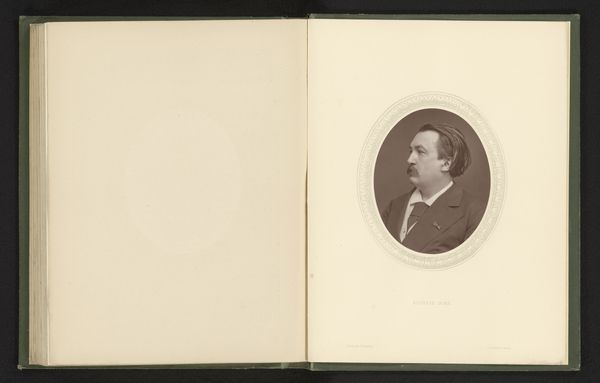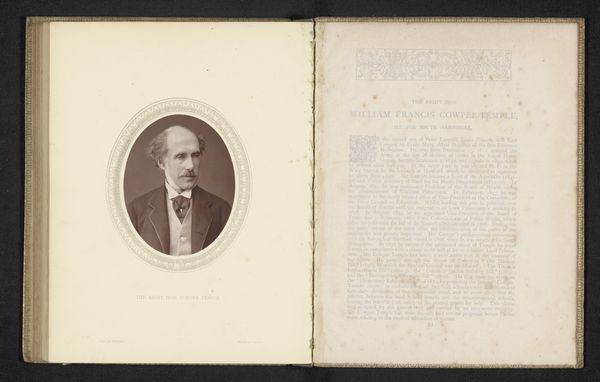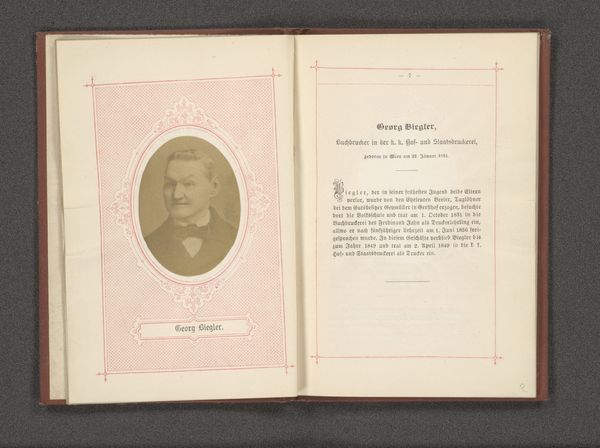
photography, albumen-print
#
portrait
#
ink paper printed
#
photography
#
albumen-print
#
historical font
Dimensions: height 115 mm, width 89 mm
Copyright: Rijks Museum: Open Domain
Curator: Here we have a page from an album featuring Vice Admiral Sir Francis Leopold McClintock, circa before 1878, captured in an albumen print, a type of photography common in that era. Editor: My initial response is one of reserved formality. The subdued sepia tones and oval portrait shape create a sense of historical distance, yet there is also an undeniable presence conveyed through his gaze. Curator: It is a really compelling representation of Victorian society’s admiration for figures of authority and accomplishment, especially explorers. The visual language certainly reflects this, it reminds us about how individuals were placed and presented within the Imperial framework. Editor: Absolutely. McClintock's expeditions were driven by this quest, by national ambition and the scientific aspirations of the time. He's presented as an embodiment of this, almost stoic, which makes you think about the pressures and ideologies imposed on these heroic figures, right? Curator: The use of photography here is telling, photography started out being only used by the very rich. So how does this translate to visual storytelling within the album itself and what sort of personal and public narratives does it serve? Consider how he's positioned within this framework, which at this point only had an elite use and audience. Editor: It almost appears to create another layer of reverence and access only for certain audiences; it amplifies and circulates these constructed narratives around exploration, which perhaps further cemented these voyages in British collective memory. This use of light is also interesting, the dark colors on the clothes allow McClintock's facial features to become the central focal point in the portrait. Curator: By today’s standard McClintock's journeys would definitely be re-contextualized in discussions around exploitation, colonialism, and its implications of cultural exploitation on marginalized communities around the world. Looking at this now, we're better positioned to explore these nuances critically and thoughtfully. Editor: Indeed, by viewing this image, it almost compels us to ask critical questions regarding legacy, power, and representation – it allows us to be actively engaged with the dialogue around it.
Comments
No comments
Be the first to comment and join the conversation on the ultimate creative platform.
